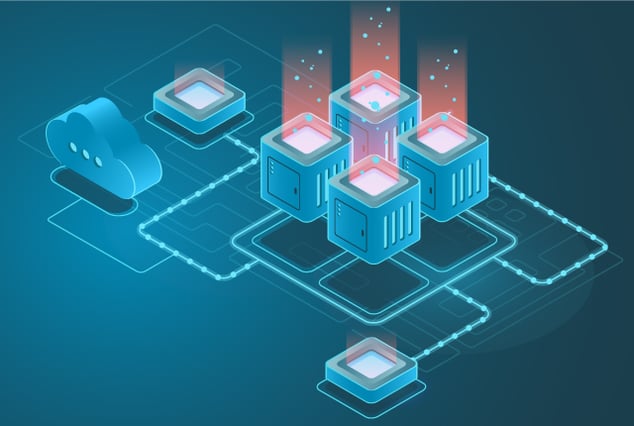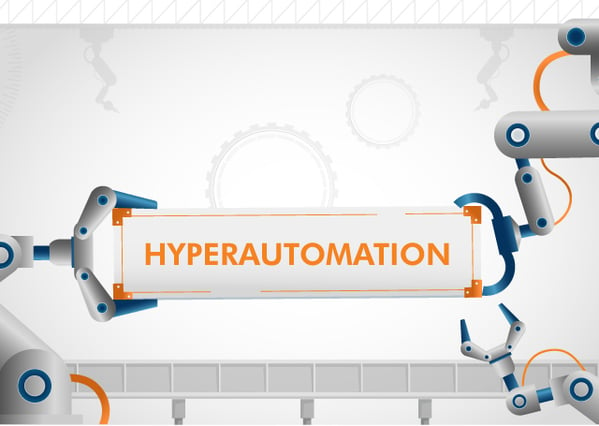
Automation wasn’t well-received when it was first introduced among the different industry verticals. Most companies were hesitant in employing this new technology simply because they feared what they didn't fully understand.
As time went on, automation technology slowly became accepted until it turned into the norm. New trend, especially such as hyperautomation is being pushed forward with a growing number of businesses changing their ways to a more “people-centric” approach.
Such change has brought about a new era in business operations as companies now rely on advanced automation tools and technology to get ahead of their competition.
What Is Hyperautomation?
Hyperautomation, according to Gartner, is the application of modern technologies that particularly involve artificial intelligence (AI) and machine learning (ML). These are designed to automate a wide range of processes while improving human capabilities. Hyperautomation combines several aspects of process automation, tool integration, and advancements that enhance the act of automating work.
Besides AI and ML, other tools, platforms, and technologies used in hyperautomation are:
- Business process management and intelligent business process management suites
- Event-driven software architecture
- Integration platform as a service (iPaaS)
- Low-code or no-code tools
- Packaged software
- Robotic process automation (RPA)
- Other tools designed to augment tasks, decisions, and processes
When hyperautomation is used correctly, it can help enterprises unlock their full potential through:
- The use of artificial intelligence (hyper AI)
- Discovering new opportunities for automation
- Leveraging workforce engagement capabilities
- Access to advanced analytics for ROI
Automation vs Hyperautomation
What is automation and how does it differ from hyperautomation? First of all, automation refers to the processes that go on inside computer devices. It’s not to be confused with the automation that happens when robots are involved.
The automation in computers can be categorized into two groups: RPA and automation testing. Although these two types of automation have unique purposes, they provide the same advantages to their users which is allowing processes to be done faster.
In the business sector, automation is used to increase productivity while lowering the associated risk and expenditure.
Below is a table that enumerates the main differences between automation and hyperautomation.
| Automation | Hyperautomation | |
|---|---|---|
|
Technologies required |
Process is accomplished by automation tools |
Process is accomplished by several ML tools, package hyperautomation software, and automation tools |
|
Sophistication of technology |
Tasked-oriented automation and RPA |
Process automation is based on sophisticated AI |
|
Scope |
Automation is performed on a single platform |
Hyperautomation is performed through an ecosystem of technologies, systems, and platforms |
|
Degree of coverage |
Wherever it is relevant |
All-encompassing |
|
Outcome |
Operations are completed with efficiency |
Operations are completed in a smart and efficient manner |
How To Get Started With Hyperautomation
Organizations looking to get their hyperautomation journey going can follow these steps to get started:
- Gather insights on processes: You can use process mining to learn how current processes work, pinpoint gaps and bottlenecks in existing systems, and identify aspects that can benefit from digital automation.
- Identify data: From there, you should start looking into both unstructured and structured data as well as other inputs that can help you work on automating the processes.
- Predict outcomes: You can then start predicting the outcomes with regards to your ROI and efficiencies.
- Determine automation platform: See which automation platform will work best for your needs. You can even use existing algorithms and tools if you have them.
- Automate complex business processes: Begin automating sophisticated business activities and processes. Don’t rule out further-automating current automated technologies to become even more efficient.
- Use AI tools to achieve tasks: Take advantage of AI-based tools to accomplish all actions. Technologies such as natural language processing and cognitive learning can be beneficial here.
Benefits of Hyperautomation
As stated above, hyperautomation expands the core automation capabilities of an organization by utilizing RPA and other advanced technologies. Such integration can provide companies with the following benefits:
-
Amplifies Automation of Work and Automates Processes
Through robotic process automation, companies can automate tedious and repetitive tasks to make the work of their staff easier, but hyperautomation does more than that.
With hyperautomation, you can combine an assembly of technologies, tools, and components to increase the extent of automation in your business. Not only does this make existing jobs easier, but it also allows you to be more productive.
-
Fosters Team Collaboration and Improves Productivity
Hyperautomation provides companies with the means to connect employees with the tools they use daily. The novel transformation that businesses will undergo through this approach will encourage various departments to be involved in the process.
Together with RPA, hyperautomation software, and other intelligent tools, users throughout the organization will find it easier to collaborate with each other.
-
Increases Business Agility
Business agility refers to how feasible a company can adapt to what is needed of it. Using hyperautomation, an organization ensures that it can scale according to new demands and requirements.
Involving intelligent automation tools can make it easier for businesses to change and keep pace with dynamic and growing markets.
-
Improves Employee Engagement and Satisfaction
Hyperautomation is capable of improving work quality by using advanced technologies that make manual work less difficult to accomplish. Thanks to the improved automation, employee satisfaction can be expected.
The approach also requires everyone in the company to contribute to the digital transformation which increases workforce engagement.
-
Improves Accessibility to Data and Its Storage Mechanisms
Since the point of hyperautomation is based on integrating modern software and processes for more efficiency, businesses can expect more seamless interactions between users and their infrastructure. The prevalence of hybrid and multi-cloud technologies also makes system integrations an essential aspect of digital transformation.
With all company systems able to connect effortlessly, this ensures that all core elements can be accessed within a centralized storage. The use of hyperautomation AI and machine learning further optimize these connections.
-
Augments ROI
The final objective for any transformation or initiative that takes place is to achieve a better bottom line for the organization. Hyperautomation has a huge potential to deliver increased ROI for companies.
For instance, hyperautomation can optimize the invoice process by automating the end-to-end multi-layered approach to secure outcomes and provide successful returns.
Use Cases for Hyperautomation
Since all industries can benefit from some form of automation, hyperautomation can be used in various sectors to improve their existing processes.
Here are four examples of use cases for hyperautomation:
-
Use Case Example 1: Supply Chain
The COVID-19 pandemic has had a huge impact on the capability of companies to acquire materials on time. Meanwhile, reduced staffing means process delays that result in numerous challenges for businesses.
By leveraging robotic process automation, companies can perform inventory checks around the clock to ensure easy access to their stock levels and product availability. RPA can also be used for billing, pricing, procurement, system maintenance, and more.
-
Use Case Example 2: Finance
One of the industries that are constantly being pressured to improve efficiencies while reducing costs is the finance sector. There is also a growing demand to provide more personalized experiences for customers.
Using hyperautomation, financial institutions can leverage higher quality data to be more effective in their business process management. This will allow them to provide their clients with in-depth information that can help them make informed decisions.
-
Use Case Example 3: Healthcare
Another industry that can leverage hyperautomation is healthcare. Health facilities can start using this approach to provide their patients with better experiences. It also lets them have access to more accurate information about patient’s health that is crucial in this sector.
Those in healthcare can also leverage hyperautomation to ensure regulatory compliance, which is not only critical for viability, but also for the success of any health organization.
-
Use Case Example 4: Retail
Companies operating out of the retail industry will find numerous benefits when they start taking advantage of hyperautomation. E-commerce is one example that can benefit from a hyper AI to streamline their front-end processes such as email marketing and ad placements.
Back-end retail processes that impact billing, procurement, transportation, and inventory can benefit from the improved efficiency and reduced costs that come with hyperautomation.
Additionally, retail companies have been using hyperautomation to monitor and analyze marketplace criteria such as customer feedback and competitive pricing. This allows retailers to make faster and more accurate decisions that will result in increased revenue and profitability.
Conclusion
Hyperautomation can be beneficial to organizations in various industries because it integrates various advanced technologies to automate a wide range of processes. With the popularity of hyperautomation continuing to grow, companies must begin adopting it to avoid being left behind.
For those that have already adopted the approach, the goal is to stay ahead by continuing to assess existing processes and ensure that the current toolstack is still working sufficiently.
As with all technologies, you’ll have to constantly remind your team to use modern tools in a smart and effective manner. That’s why you should also select hyperautomation software and tools that can be combined to work seamlessly. Having a coordinated ecosystem of automated processes can make life easier for your employees to collaborate and work together toward a common goal.
If you’re looking for a partner that can help test your current processes and identify gaps in your systems, QASource has the solutions for you. We can provide you with a team of quality assurance specialists without the hassle and cost of hiring an entire department of them.
Contact us today to learn more.
Download your free checklist below and discover the steps that need to be completed when preparing for performance testing.





